Join More Than 50,000+ Subscribers and get latest camera news and rumors
NEW CAMERA VIDEOS ON YOUTUBE
|
By admin, on April 21st, 2025

Sony has registered a new model codeWW934774 in Shanghai Suoguang, China, as we now know most of the A7 series cameras / full-frame models have now shifted to Thailand. And now, mainly Sony is manufacturing the ZV series APS-C and Compacts in China. So, with the registration of Model Code WW934774, we can expect either a ZV series model update or a Compact Camera announcement like the Sony ZV-1 III. (Sony ZV-1 II was announced on May 23, 2023, now approximately 2 years old and is due for an update based on the compact camera refresh cycle)

Previous registration Full information – WW277226 (registered in Indonesia, manufactured in Thailand, possibly the Sony A7V or another E-mount camera) Sony registered a New Camera WW277226
The article “Breaking News: Sony Registered one More Camera – Model Code WW934774” was first published on thenecamera.com website, at 3:41 pm Monday, 21 April 2025, by the new camera team Follow us on our social pages FACEBOOK | TWITTER | INSTAGRAM, If you have time –>see more Sony Alpha Rumor
source of the information – E8M_8888
By admin, on April 20th, 2025
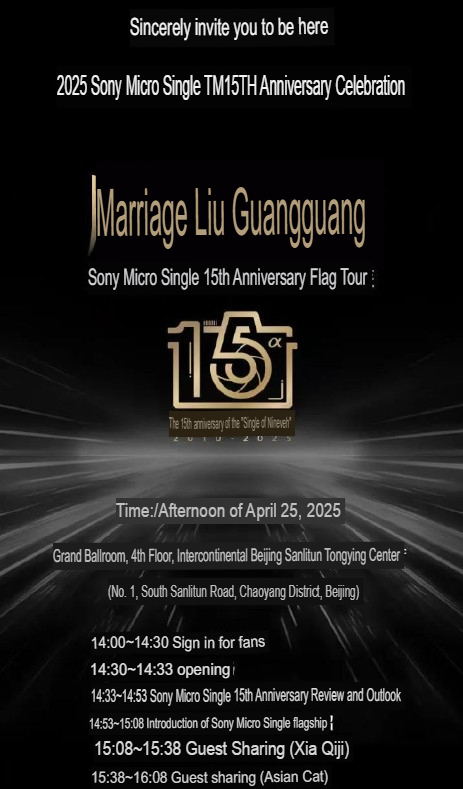
Sony is organizing an event on April 25, 2025. The date looks unique, and Sony A7V is overdue; let’s hope they do it this time.
Updated Table with Prediction
| Camera Model |
Announcement Date |
Source |
| Sony A7 |
October 16, 2013 |
|
| Sony A7 II |
November 20, 2014 |
|
| Sony A7 III |
February 26, 2018 |
|
| Sony A7 IV |
October 21, 2021 |
|
| Sony A7V (Predicted) |
November 2025 (Possible: April–June 2025) |
Based on analysis & Rumors |
Update Log:
Update April 21. 2025: Thanks niico. According to him its just a regular event, not a product announcement
See all the latest rumors related to the Sony A7V
Update 12:35 pm, Friday, 25 April 2025 – the Images if the April 2025 event surfaced online today, although NO major announcement has been made as mentioned by our user niico earlier
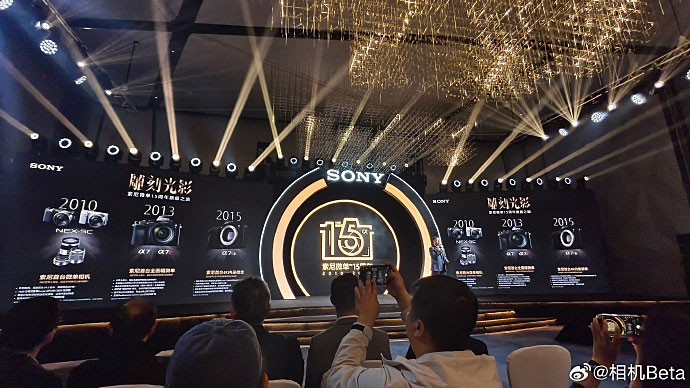
Follow us on our social pages FACEBOOK | TWITTER | INSTAGRAM, If you have time –>see more Sony Alpha Rumor
By admin, on April 19th, 2025
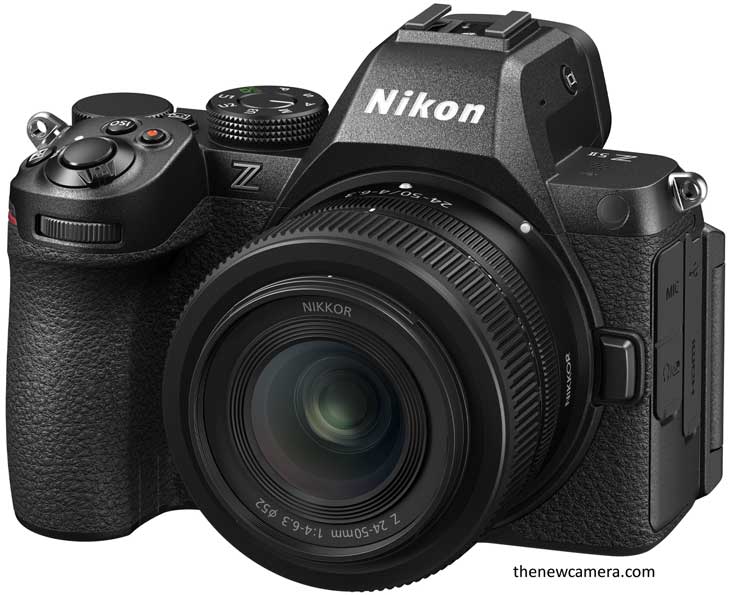
The Nikon Z5 II camera was announced in April 2025. It features the same sensor as the Nikon Zf and Z6 II cameras, paired with Nikon’s fastest speed 7 image processor. The AI autofocusing of the Nikon Z5 II camera is much improved over its predecessor. Now, it features 9 different types of subject detection algorithms, including bird’s-eye autofocus.
We have carefully selected the best available lenses for the Nikon Z5 Mark II camera. These lenses will help you in various photography genres, including wedding, sports, wildlife, portrait, and landscape photography. You can use any of the lenses recommended below in the article.
Nikon Z mount lenses
Let’s first understand the Z mount lenses. The new Nikon Z mount has a shorter flange distance compared to the DSLR F mount, so the lenses that you are using in the mirrorless camera feature superior optical performance, and the shorter flange distance allows them to have a compact design and better light transmission, resulting in sharper images.
You can also use the Nikon FTZ or the FTZ Mark II adapter to use Nikon DSLR lenses, which are compatible with the adapter.
Nikon Z5 II also features a sensor-shift image stabilisation system up to 7.5 stops that also helps you to enhance image sharpness by allowing you to use slow shutter speeds in an uncontrolled light environment.
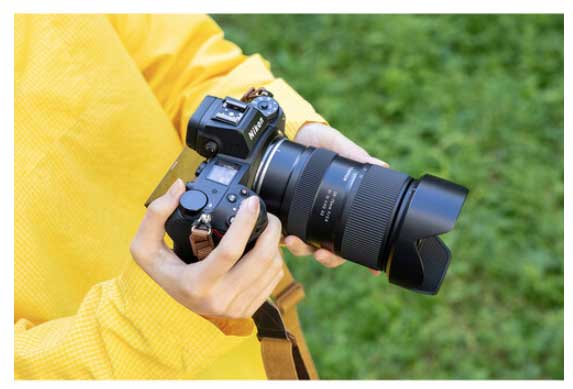 Nikon Z6 Best Lenses for Nikon Z5 II: Top Picks for Every Photographer in 2025 1. Best Lenses for Wedding Photography | Best Standard kit Zoom Lens
Tamron 28-75mm f/2.8
The Tamron 28-75mm f/2.8 lens is a versatile zoom lens, a perfect lens for wedding photography, travel, landscape or street photography. It’s a perfect lens for everyday use if you want to have a standard kit zoom lens with constant f/2.8 aperture. The biggest advantage of having an f/2.8 lens over f/4 is the cinematic depth of field. If you don’t need it, if you want everything in focus, of course you can raise your aperture to f/4, f/5.6 or f/8. But with an f/4 lens, you can never set your aperture to f/2.8. That’s the facility we get from the Tamron f/2.8 lens.
-
Key Features: 72mm filter thread, 500g weight, 0.3m minimum focus distance, weather-sealed.
-
Pros: Super-sharp images, lightweight, retractable design.
-
Cons: f/4 aperture less ideal for low light compared to f/2.8 lenses.
-
Latest Deals & Price: B&H Store | amazon.com
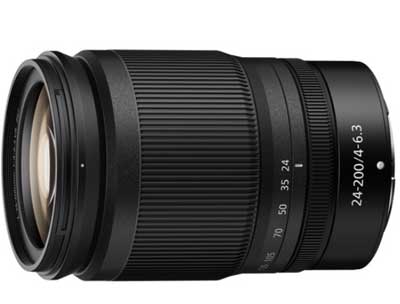
Alternative: Nikon Z 24-200mm f/4-6.3 VR – Photographers who love to have more reach, approximately 8x optical zoom range to cover from wide angle to telephoto range, then this lens is highly suitable for them. Yes, you will miss the cinematic depth but you will have more zoom range in your hand. The lens also features Vibration Reduction, which is an important feature for a longer focal length lens.
-
Key Features: 77mm filter thread, 570g weight, 4.5-stop VR.
-
Pros: Extensive zoom range, compact for a superzoom.
-
Cons: Variable aperture, less sharp at longer focal lengths.
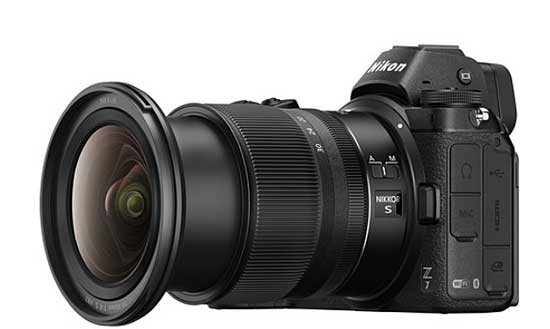
2. Best Lens for Landscape Photography
Nikon Z 14-30mm f/4 S
The Nikon 14-30mm lens is a top choice among landscape photographers, and its usage is not only limited to them — even architecture photographers, interior designers prefer this lens a lot. It covers a very wide range due to its ultra-wide focal range and a very compact design. The lens exhibits very minimal distortion and excellent sharpness throughout the range.
-
Key Features: 82mm filter thread, 485g weight, 0.28m minimum focus distance.
-
Pros: Ultra-wide angle, high image quality, filter compatibility.
-
Cons: Pricey, no focus distance scale.
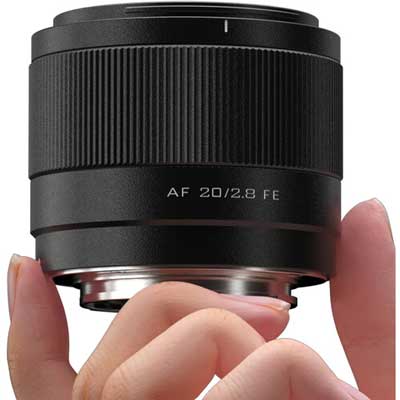
Alternative Third-Party Wide-Angle Lens
Viltrox 20mm f/2.8 lens is one of the best budget ultra-wide-angle full-frame lenses available for Nikon Z mount from a third-party lens maker, although it may not deliver the optical precision that Nikon S-line lenses deliver to you. Get it from B&H Store
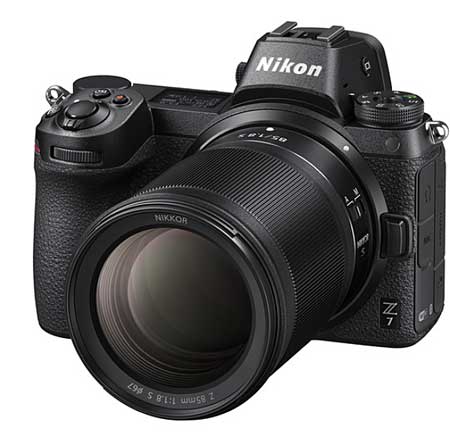
3. Best Lenses for Portrait Photography
Nikon Z 85mm f/1.8 S
The Nikon 85mm f/1.8 S is the sharpest portrait lens available for the Nikon Z mount. It delivers superb images with excellent background blur — or you can say very creamy bokeh — ideal for headshots and full-body portraits. Reviews also report its excellent out-of-focus capability and reliability.
-
Key Features: 67mm filter thread, 470g weight, 0.8m minimum focus distance.
-
Pros: Outstanding sharpness, beautiful bokeh, weather-sealed.
-
Cons: Depth of field not as tight as f/1.4 lenses.
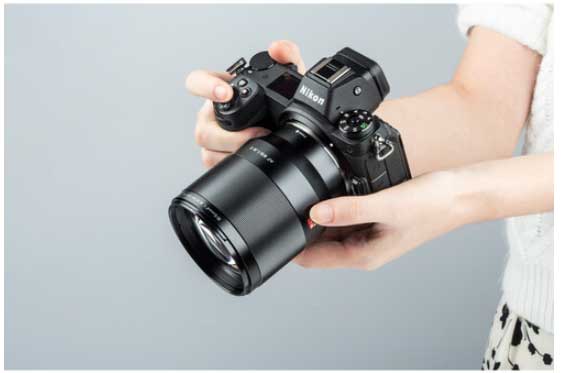
Alternative: Viltrox 85mm f/1.8 lens
For budget-conscious photographers, the Viltrox 85mm f/1.8 is the best third-party option. As per the reports we have, it does deliver decent sharpness and background blur at just half the price of the Nikon 85mm f/1.8 lens. Although the autofocus consistency as well as the solid build quality may not resemble with the Nikon 85mm f/1.8 lens, but rest assured you will not be disappointed with its performance.
-
Key Features: 72mm filter thread, 484g weight.
-
Pros: Affordable, good optical performance.
-
Cons: Less reliable autofocus, limited weather sealing.
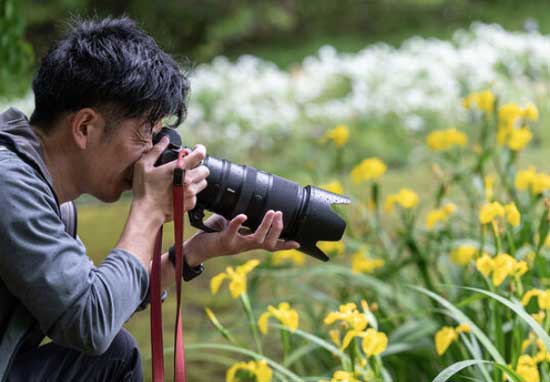
4. Best Lenses for Wildlife and Sports Photography
Nikon Z 100-400mm f/4.5-5.6 VR S
The Nikon Z 100-400mm f/4.5-5.6 VR S is an excellent, versatile, and SUPER FAST telephoto zoom lens that is a perfect option for the Nikon Z5 II camera. The lens is fast and perfect for Sports photographers for track + continuous capture. The VR system of the lens is also very effective, and you can do handheld shooting with this lens. Finally, this lens is also compatible with the teleconverters, and you can use it if you need more zoom or reach.
-
Key Features: 77mm filter thread, 1355g weight, 0.75m minimum focus distance.
-
Pros: Fast AF, Excellent sharpness, versatile range, VR stabilization.
-
Cons: Heavy, expensive.
- Latest Deals & Price: B&H Store | amazon.com | Adorama
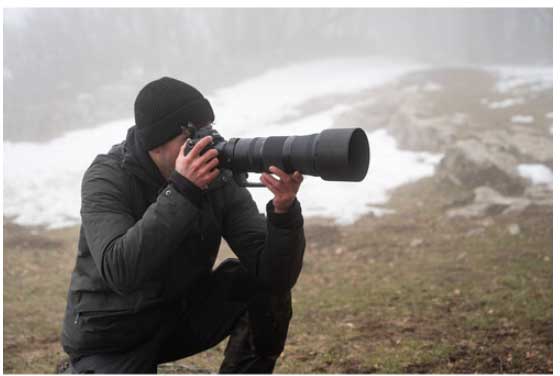
Another option for Wildlife Photographers: Nikon 180-600mm lens – The Nikon Z 180-600mm f5.6-6.3 VR lens’s sharpness is phenomenal and delivers tack-sharp images across the full frame at all focal lengths. As I have said if budget allows this is the best lens you can buy for your Nikon Z5 II camera. The lens pairs beautifully with the Z TC-1.4x without any issues and boasts a speedy and dependable autofocus. The Lens handles color aberrations, coma, focus-breathing, and distortions with aplomb. Plus, it’s got effective optical image stabilization and produces a creamy bokeh. Weighing in at a relatively high 2kg and packed with features, this lens offers great value for its price. If you’re looking for a lens that delivers on performance, the Nikon Z 180-600mm f5.6-6.3 VR lens comes highly recommended! Get a Nikon 180-600mm Lens from Amazon.com | B&H Store
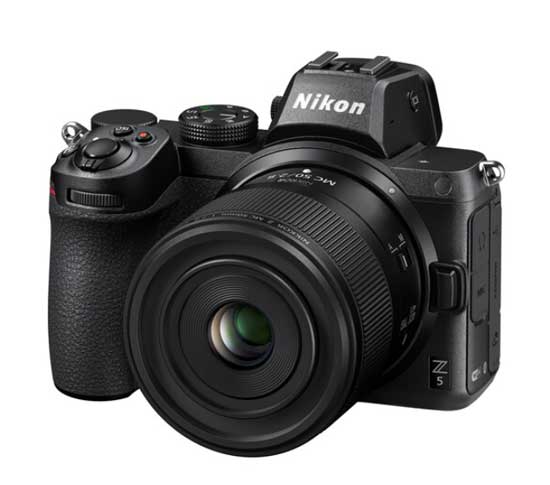
5. Best Lenses for Macro Photography
Nikon Z MC 50mm f/2.8
The Nikon Z MC 50mm f/2.8 is a compact macro lens that delivers true 1:1 magnification, or you can say real-life-size images. The lens is a budget lens and delivers the maximum sharpness possible. Although the only drawback is that you don’t have a large working distance, meaning you have to be a bit close to the subject.
-
Key Features: 46mm filter thread, 260g weight, 0.16m minimum focus distance.
-
Pros: Sharp images, 1:1 magnification, affordable.
-
Cons: Short working distance, no VR.
Alternative: Nikon Z MC 105mm f/2.8 VR S lens
If looking for a longer working distance and budget is not an issue to you, then the best lens for macro photography is the Z MC 105mm f/2.8 VR S. Due to its very effective VR as well as Nikon Z5 II’s 7.5 stops of sensor IBIS, you can do handheld macro photography shots, although it’s always recommended to do macro photography with a tripod if possible.
-
Key Features: 62mm filter thread, 630g weight, VR stabilization.
-
Pros: Longer reach, stabilized optics, excellent sharpness.
-
Cons: Expensive, heavier.
- Latest Deals & Price: B&H Store | amazon.com | Adorama
Third-Party Lens Options
Many third-party lens makers like Viltrox, Sigma, and Tamron are making autofocus lenses for the Z mount. We have selected some of the best and our favorites, and these are below:
-
Viltrox AF 85mm f/1.8: Affordable portrait lens with good sharpness but less consistent autofocus.
-
Tamron 35-150mm f/2.8-4: Versatile zoom for events and travel, offering a unique focal range.
-
Sigma 24mm f/1.4 Art: Wide-angle prime with excellent image quality, though less common in Z-mount.
FAQ: Nikon Z5 II Lens Questions
What are the best lenses for the Nikon Z5 II in 2025?
The best lenses for the Nikon Z5 II include the ultra-popular and most used Tamron 28-75mm f/2.8 G2 lens. This particular lens is one of the most favorite lenses for wedding and event photographers. This one is the best alternative to the standard kit lens you generally get with your camera. Guaranteed! The next best lens is the Nikon Z 14-30mm f/4 S for landscape photography and ultra-wide coverage. And finally, for portraits, as we have mentioned in our article also the Nikon Z 85mm f/1.8 S. For wildlife, the Z 100-400mm f/4.5-5.6 VR S is recommended, but the best again is the Nikon 180-600mm for bird photography lovers. And before we complete this answer, the Nikon MC 50mm f/2.8 Micro is the best suitable lens to start macro photography.
Can I use F-mount lenses on the Nikon Z5 II?
Yes, you can use your F-mount lenses with the new Nikon Z5 II camera while using the FTZ or the FTZ II adapter. The autofocus and auto exposure will work perfectly with the Nikon AF-S and Nikon AF-I lenses. But the older manual focus lenses or those lenses that are based on screw-drive motor tech will not work with the Z5 II.
What is the difference between the Z mount and F mount lenses?
Z mount lenses are designed for the mirrorless camera, having a shorter flange distance, resulting in better light preservation resulting in higher resolving capability. At the very same time, the optics have also been improved in the new Z mount lenses. F-mount lenses were typically made for DSLRs having a broader flange distance, and if you want to use those lenses on your mirrorless camera, you have to use an FTZ or FTZ II adapter.
Are there budget-friendly lenses for the Nikon Z5 II?
We have many budget lenses that start from Tamron 28-75mm f/2.8, which comes at a very reasonable price range and features f/2.8 constant aperture. We have lenses like 20mm f/1.8 — a full-frame lens for Nikon. We have lenses like the 85mm f/1.8. Several third-party lenses are cost-effective and made for Z mount.
What is the best lens for landscape photography with the Nikon Z5 II?
The Nikon Z 14-30mm f/4 S is the best and the ideal lens for landscape photography. It provides an ultra-wide zoom range and captures very crisp and sharp images with minimal distortion.
What is the best standard kit zoom lens for the Nikon Z5 II camera?
The best standard kit zoom lens for the Nikon Z5 II camera is the Tamron 28-75mm f/2.8 G2 lens. The lens offers a very compact design and features constant f/2.8 aperture so it’s an excellent low-light performer and works very well with the Nikon Z5 II’s 7.5 stops of IBIS to deliver crisp and clear images with excellent cinematic depth.
Best portrait photography lens for the Nikon Z5 II camera?
The Nikon 85mm f/1.8 S lens is the best and it delivers exceptionally sharp images with very smooth creamy background blur and very reliable and fast autofocusing mechanism. This lens is a perfect choice for professional portrait photography with the Nikon Z5 II camera, and if you are on a budget, then of course Viltrox 85mm f/1.8 lens is the budget alternative to it.
Do the Sigma, Tamron, or Viltrox third-party lenses work with the Nikon Z5 II camera?
Yes, the third-party lenses from Viltrox, Sigma, and Tamron are fully compatible with the Nikon Z series camera and offer fast autofocus and exceptional image quality. Since Nikon has shared their autofocus algorithm with these third-party lens makers, rest assured, even in the near future, you won’t have any AF issues related to third-party lenses.
Lets us know if you have any questions
Support us – Use or affiliate link Amazon.com | B&H Store for the next purchase u make – it helps us 🙂
Update Log: This Guide was created on 19 April 2025 by thenewcamera.com team of editors. Follow us on our social pages FACEBOOK | TWITTER | INSTAGRAM to get live Camera News +
By admin, on April 18th, 2025
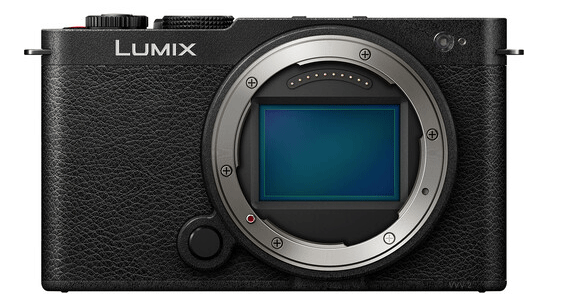
Panasonic has started distributing firmware update Ver.1.4 for the ” LUMIX S9 “. It appears to fix some bugs and be a minor update.
- Fixed a problem where some settings would revert to the default settings after updating the firmware to Ver.1.3.
- Fixed a bug in recording gain settings.
- Fixed an issue where the password authentication prompt would not appear when connecting to Wi-Fi.
Improved operational stability.
Panasonic S9 is selected as the best content creator camera by TIPA., The camera, after the V1.1 update, has become one of the best cameras for professionals.
Click here to download the update
By admin, on April 18th, 2025

Samyang 24-70mm F2.8 Mark II AF Zoom in Announcement Pipeline – Samyang 24-70 Mark II for E-Mount ( 2nd edition ) is about to arrive according to the latest and confirmed information we have, but what we are expecting right now is that the earlier version or some of the lenses of 24-70 F2.8 series were having some design issues. I hope this time they will fix it, and none of the users will have to face such an issue.
Stay tuned for more updates coming soon…
Follow us on our social pages FACEBOOK | TWITTER | INSTAGRAM to get live Camera News +
By admin, on April 18th, 2025
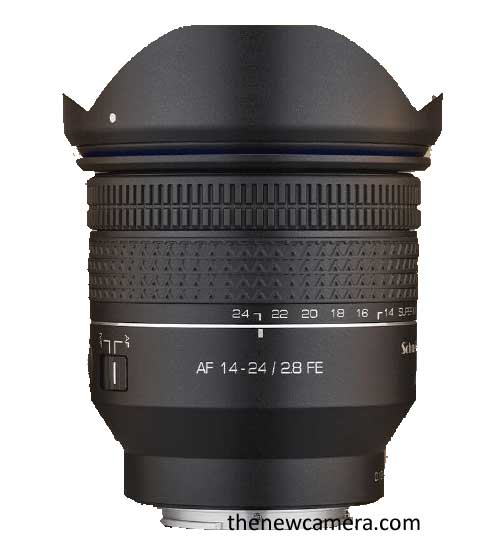
Samyang announced AF 14-24mm f/2.8 lens for Sony E-mount, although the official announcement / formal press release based announcement will be done on April 25, 2024.
The lens weighs only 445 grams and supports 77mm circular filters, so it is lightweight, convenient, easy to carry, and one of the most important things is that they have upscaled the autofocus performance of the lens compared to their previous generation of lenses. The price of the lens is expected to be around 1100 USD.
You can check early pre-order links on this website for the B&H Store and at Adorama.com.
Follow us on our social pages FACEBOOK | TWITTER | INSTAGRAM to get live Camera News +
This page will be updated soon with more information
By admin, on April 18th, 2025
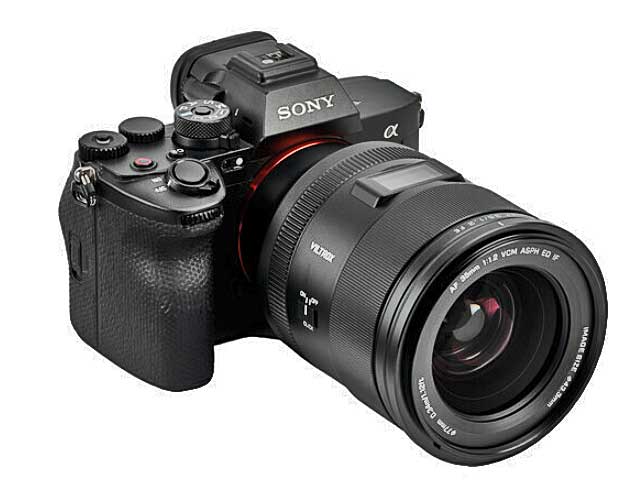
With best-in-class optics, a Hyper VCM motor, and multi-layer Nano Crystal Coating, Viltrox has announced one of the finest and most premium Viltrox 35mm f/1.2 lenses. This is Viltrox’s most advanced lens, built with the finest-grade optics available to them. Viltrox says the lens has an “advanced dust and moisture-resistant design.” The AF 35mm F1.2 Lab is available to order today and costs $999.
Check out the latest Price at B&H Store | Amazon.com |
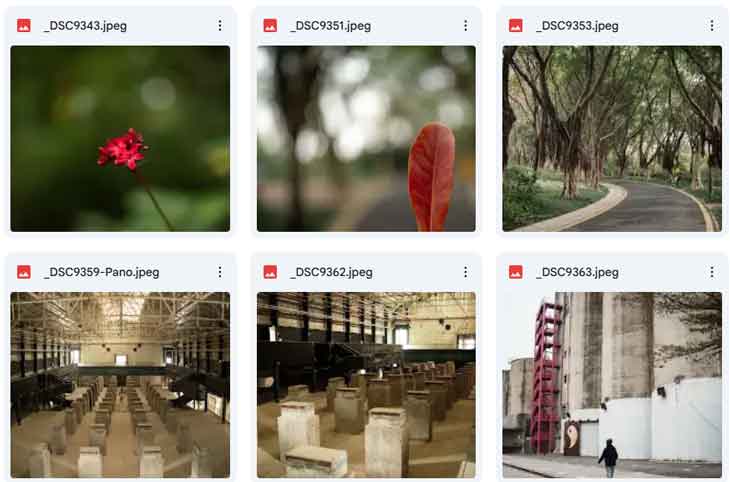
Viltrox 35mm F1.2 LAB Lens High Resolution Samples Images
Images captured with the Sony A7R5 camera + Viltrox 35mm F1.2 Lens – Download High Resolution Sample Images from here [ Exif information attached with the image ] * Sample Images should be used for personal use only – kindly credit back to us if you use content or images from this article
Viltrox 35mm F1.2 LAB Lens Press Release
Full-Frame Ultra-Large-Aperture Autofocus Prime Lens “Flagship, Redefined“
Brief Introduction to the LAB Exploration Series: Viltrox has always been dedicated to the relentless pursuit of optical excellence, continuously exploring the infinite possibilities of image creation. The LAB series represents the pinnacle of Viltrox’s optical innovation, pushing the boundaries of traditional technology to deliver an unprecedented imaging experience. As the latest masterpiece in the LAB series, the AF 35mm F1.2 LAB continues Viltrox’s commitment to exceptional image quality and outstanding performance, setting a new benchmark for flagship full-frame, large-aperture prime lenses.
Lens Introduction: The AF 35mm F1.2 LAB is the second full-frame, large-aperture autofocus prime lens in Viltrox’s LAB series. It integrates Viltrox’s cutting-edge optical technology, pushing the resolution and bokeh performance of the F1.2 aperture to new heights. Featuring a professional lens control system and custom color display with startup animations, it offers an efficient and personalized shooting experience. Whether for portraits, street photography, or nightscapes, this lens delivers exceptional optical performance, capturing every detail and unleashes limitless creative potential.
Exploring Optical Excellence: AF 35mm F1.2 LAB redefines flagship-level resolution, achieving a groundbreaking leap in optical performance. Designed to fully meet the demands of ultra-high-pixel sensors, it delivers razor-sharp detail from rear to far, capturing even the finest textures of skin, hair, and other intricate subjects.
Even at maximum aperture, it maintains exceptional edge-to-edge sharpness, ensuring consistent image quality across the frame. This guarantees remarkable detail retention for post-cropping flexibility, offering an unparalleled shooting experience and creative freedom.
F1.2 Ultra-Wide Aperture
Pure Clarity in Darkness: The F1.2 aperture excels in creating exceptional bokeh while significantly enhancing light transmission, allowing for sharp, noise-free images even in challenging low-light conditions without the need for additional lighting. The lens adapts seamlessly to complex lighting scenarios, offering unparalleled sharpness and purity in every shot.
Dreamy, Immaculate Bokeh: The F1.2 ultra-large aperture creates an exquisite background blur, with smooth, delicate bokeh and no optical vignetting at the edges, rendering a dreamy visual effect. Whether for portrait photography or nightscapes, the lens easily renders perfect separation between the subject and background, presenting a visually striking composition.
Innovative Aperture Blade Drive Technology: The lens aperture drive adopts the Viltrox HyperVCM motor technology, delivering more precise and efficient aperture control.
Flagship Optical UA Lens (Ultra-Large & Precision Aspherical Lens): The manufacturing of aspherical lenses poses immense technical challenges. Breaking through traditional craftsmanship constraints and exorbitant cost limitations, Viltrox UA lenses spare no effort in innovative optical design. This breakthrough effectively reduces onion-ring bokeh artifacts while achieving both high resolution and exquisitely smooth bokeh rendering, ultimately delivering refined and exceptional imaging performance.
Viltrox HyperVCM for Fast & Precise AutoFocus
The AF 35mm F1.2 LAB features Quad Viltrox HyperVCM motors, powered by Viltrox’s proprietary core technology, delivering robust focusing power while significantly improving autofocus speed and precision. Whether shooting static subjects or tracking dynamic motion, the lens achieves swift, quiet, and micron-level accurate focusing, capturing every fleeting moment with ease.
Compared to traditional STM motors:
- 150% faster autofocus speed
- Micron-level positioning accuracy
- 100ms switching from closest to farthest focus points
Supports face/eye recognition autofocus and other camera feature, securely locking onto subjects for a top-tier autofocus experience.
Efficient Control for Professional Experience
The AF 35mm F1.2 LAB is equipped with a comprehensive professional control system, enabling photographers to adjust settings more efficiently and unlock creative possibilities.
Multi-Functional Ring: Multi-functional control ring supports quick adjustments of parameters such as aperture and focus, adapting to the needs of various shooting scenarios.
Customizable Fn Buttons: The lens is equipped with two customizable Fn buttons, allowing users to assign shortcut functions according to their shooting needs. Additional configurations can be made via the Viltrox Lens APP, thereby enhancing operational efficiency.
AF/MF Switch: Seamlessly switch between autofocus and manual focus modes to adapt to different shooting requirements.
Click/Stepless Aperture Adjustment: Easily switch between stepped and stepless aperture adjustments for the ultimate creative flexibility.
Customizable Color Display for a Personalized Experience: The AF 35mm F1.2 LAB is equipped with a custom color display, allowing users to personalize settings through the Viltrox Lens App. Features such as startup animations and parameter previews offer a unique identity to the lens, while providing an entirely new level of control. In specialized shooting environments, the color display can also show real-time information such as the lens aperture and object distance, enhancing shooting precision and creative control in all time.
Built for All Conditions: Dust and Moisture Resistance: The AF 35mm F1.2 LAB features a high-grade dust- and moisture-resistant design, offering reliable durability against harsh conditions like sand, rain, and challenging environments. Built to meet the demands of professional photographers, it ensures dependable performance in any shooting scenario.
- Ultra-high dustproof and drip-resistant construction – Effectively prevents sand, dust, and water droplets from entering the lens interior, ensuring the delicate internal components remain undamaged.
- Water- and stain-resistant coating on front lens
- Aerospace-grade full-metal housing
Get More Immersed in Backlit Shooting
- 15 elements in 10 groups optical structure: 5 ED lenses, 3 high refractive index lenses, 2 UA lenses.
- Even in strong light conditions, the lens delivers excellent color reproduction and contrast, resulting in unparalleled image performance.
- Even in strong light conditions, the lens delivers excellent color reproduction and contrast, resulting in unparalleled image performance.
- Excellent chromatic aberration control effectively reduces purple or green fringing in high-contrast shooting conditions.
- High-definition multi-layer nano coating, Effectively suppresses flare and ghosting during backlit shooting, ensuring pure and sharp images.
Outstanding Video Performance, Focused on Creativity
- The advanced Viltrox Quad HyperVCM motor eliminates noise from traditional gear-driven motors, delivering quieter focusing and faster autofocus tracking for video shooting.
- With excellent focus breathing control, this lens ensures smoother focus transitions, unleashing endless creative potential for video production.
Superior Distortion and Vignetting Control
The advanced optical design of the AF 35mm F1.2 LAB ensures uniform light distribution even at its maximum aperture, significantly reducing vignetting. Additionally, it excels in distortion control, ensuring minimal edge distortion for a more authentic visual experience.
0.34m MOD: Exceptional Details
Dual floating focus design significantly enhances close-up image quality, ensuring excellent close-up resolution while continuously optimizing aberrations across the entire focal range. From close-up to infinity, the sharpness remains consistently balanced throughout.
With a minimum focusing distance of 0.34m, the AF 35mm F1.2 LAB is perfect for close-up photography, effortlessly capturing intricate textures and fine details in any scene.
Details
Material: Magnesium-aluminum alloy die-coating; Aerospace-grade metal material.
OTA (Over-the-Air) Updates: Bluetooth connectivity for firmware upgrades through the Viltrox Lens App.
LAB Signature Design: A unique marking that identifies the lens as part of the exclusive LAB Series.
Inspiring Creative Scenarios
Portrait Photography: With its large F1.2 aperture and exceptional bokeh, it effortlessly captures the delicate textures and emotional expressions of portraits, making It especially ideal for environmental portraits and street portraits.
Street Photography: The 35mm standard focal length is ideal for street photography, offering a natural perspective to capture fleeting street moments. The F1.2 wide aperture ensures bright and sharp images even in challenging lighting conditions.
Night and Low-Light Photography: The ultra-wide F1.2 aperture allows the lens to perform exceptionally in night and low-light environments, without additional light sources, making it easy to achieve high-quality night photography.
Still Life and Detail: With a minimum focusing distance of 0.25m, this lens excels at close-up shots, capturing intricate details in still life photography or fleeting expressions in street photography with precision and clarity.
|
KEEP THIS BLOG ALIVE - Support New Camera Buy Canon Lenses, Buy Music CD or Digital Camera at amazon it helps this site, and you do not pay anything extra, it is just a way to help support this site.

|
























